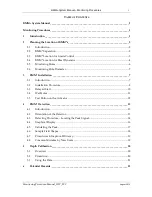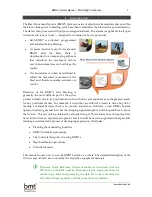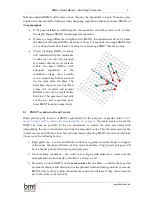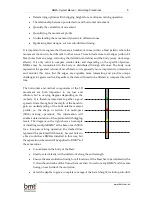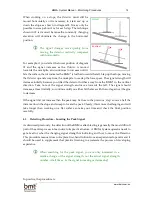
BMM
®
System
Manual
– Monitoring Procedures
1
www.bmt.com.au
1
I
NTRODUCTION
The Blast Movement Monitor (BMM
®
) System consists of directional transmitters placed within
the blast volume prior to blasting, which are then located after the blast with a special detector.
The data is then processed with purpose-designed software. The system is applicable to all open
cut mines and is easy to use — designed for routine use by site personnel.
Each BMM
®
is activated, programmed
and installed before blasting.
A special detector is used to locate each
BMM
®
after
the
blast.
Data
is
downloaded to accompanying software
that calculates the movement vectors
and then summarises and archives the
results.
Ore boundaries can then be redefined to
reflect the measured movement of the
blast and therefore enable accurate ore
control.
Detection of the BMM
®
s after blasting is
generally the most difficult part of the entire
process to learn due to its practical nature. Good tuition and experience are the greatest assets
for any practical activities. For example, it would be very difficult to learn to ride a bicycle by
reading a manual because there is no sensory experience. Similarly, a new BMM
®
System
operator needs to get a feel for what the changing signal strength is indicating and how to move
the
Detector
. This can only be obtained by actually doing it. This manual does not replace first-
hand tuition from an experienced operator and it should be used to supplement that practical
training to accelerate the process of developing experience. It includes:
Planning the monitoring locations
BMM
®
installation procedure
The correct technique for locating BMM
®
s
Depth calibration procedure
Potential hazards.
This manual covers how to use the BMM
®
System as a whole. The detailed description of the
Detector
and
Activator
are covered by the respective equipment manuals.
There are Quick Reference Guides available for download from the
VIP-Zone on the BMT website. These are step-by-step procedures for
monitoring a blast and processing the data. New users should print
and refer to them regularly until the procedures are familiar.


